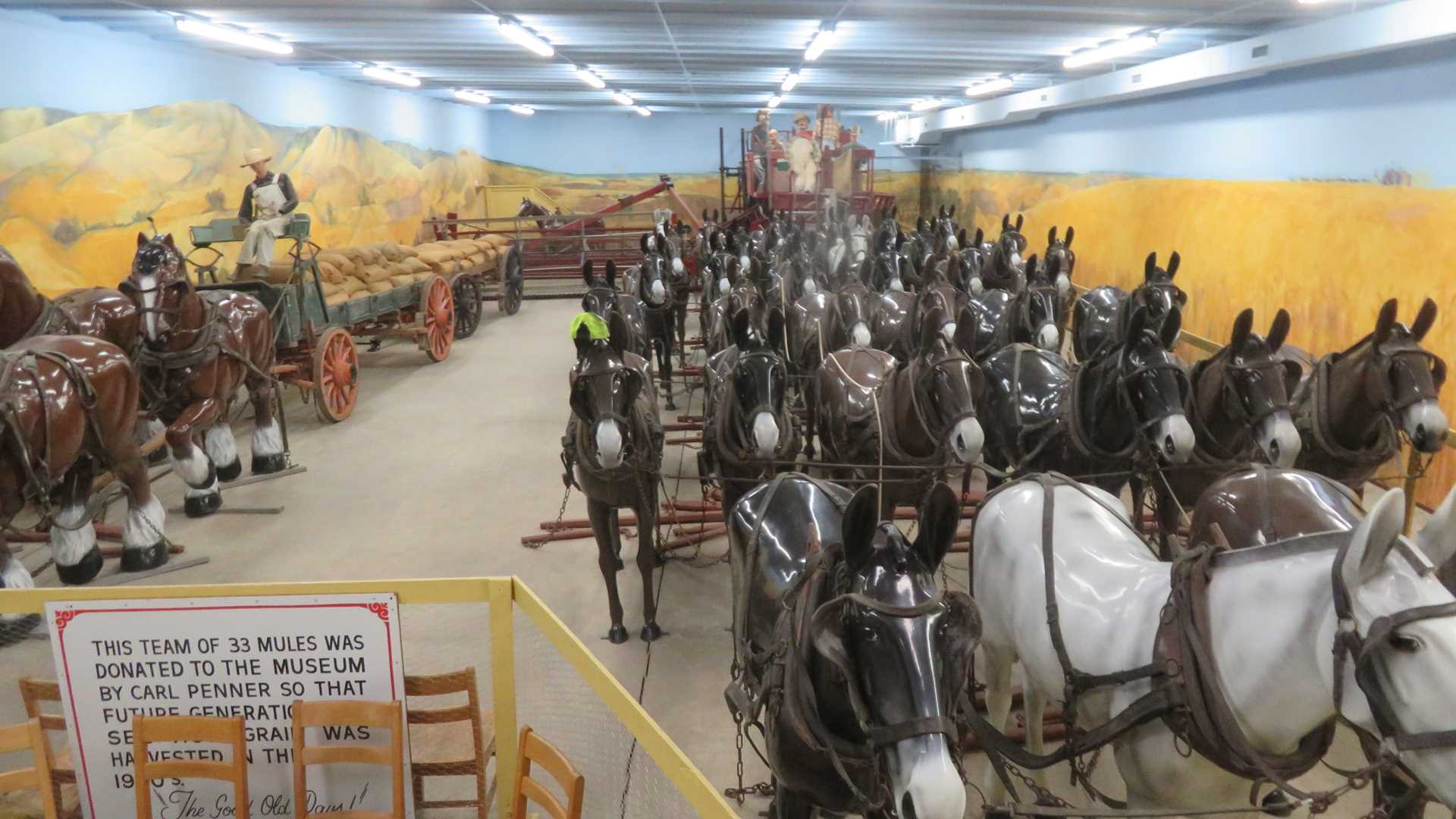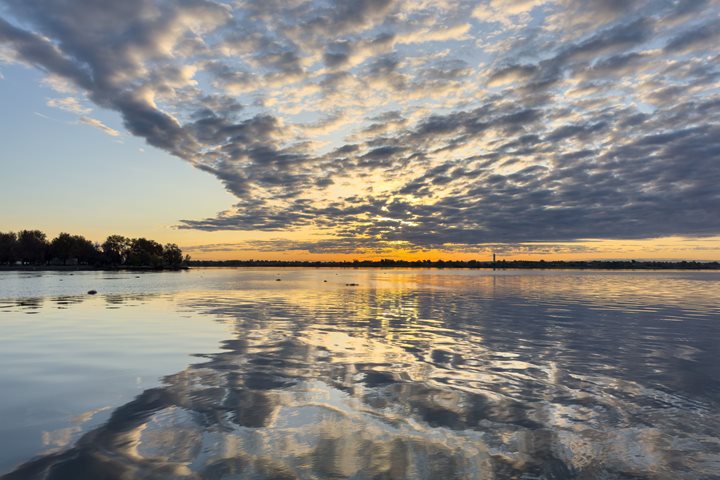We started our beautiful spring morning anchored in the Columbia River between Kennewick and Pasco, Washington, and soon we were boarding our buses for Walla Walla. We crossed the Snake River and proceeded towards the snowcapped Blue Mountains and the Walla Walla Valley.
We passed a rich agricultural area that has a variety of spring crops and apple orchards just starting their annual cycle. The Overland Trail of the Lewis and Clark Expedition intersected our route, and we could see their campsites from April 27-29, 1806 in the distance. We also had an unobstructed view of the rugged 850-foot basalt cliffs of Wallula Gap, which features prominently in the story of both the Columbia River Flood basalts from sixteen to seventeen million years ago and the Ice Age floods from twelve to eighteen thousand years ago.
After entering the Walla Walla Valley, we arrived at Fort Walla Walla Museum. This popular location features many displays about the unique history of the area. We observed a life-sized replica of a wheat harvester that was pulled by a team of 33 mules, many circa 1850 buildings representing schools, shops, and even a doctor’s office, and a display on the modern wine industry. The local area boasts more than 120 wineries.
After a fine lunch, wine tasting, and frisbee golf at Three Rivers Winery, we proceeded to the nearby Whitman Mission. This profound location was the site of the consequential Whitman Massacre of November 1847, the result of a longstanding series of misunderstandings and unfortunate circumstances that led to conflict.
After returning to the ship, the evening recap topics were the 1885 Treaty between the U.S. Government and local natives, the benefits of the Ice Age flood soils for the wine industry, dogwood trees, and the Marmes Man’s archeological site at Palouse River. The Palouse was named ‘Drewyers River’ by William Clark in 1805 after valued hunter George Drouillard.







